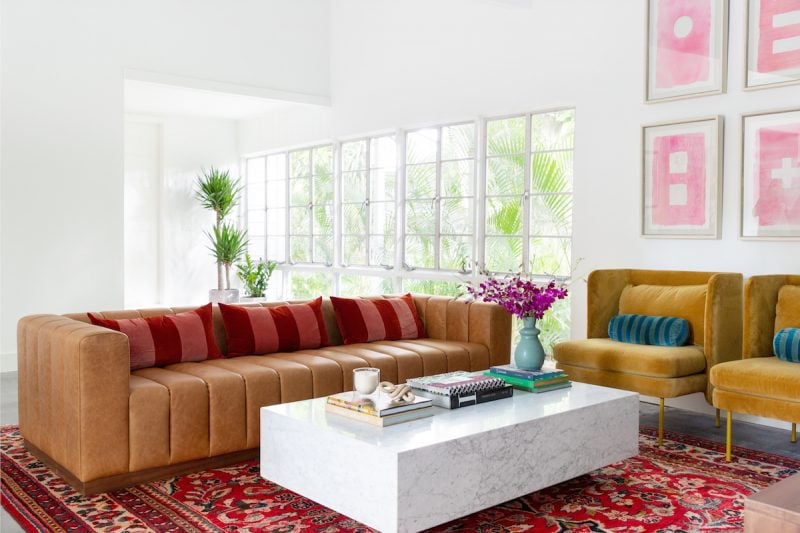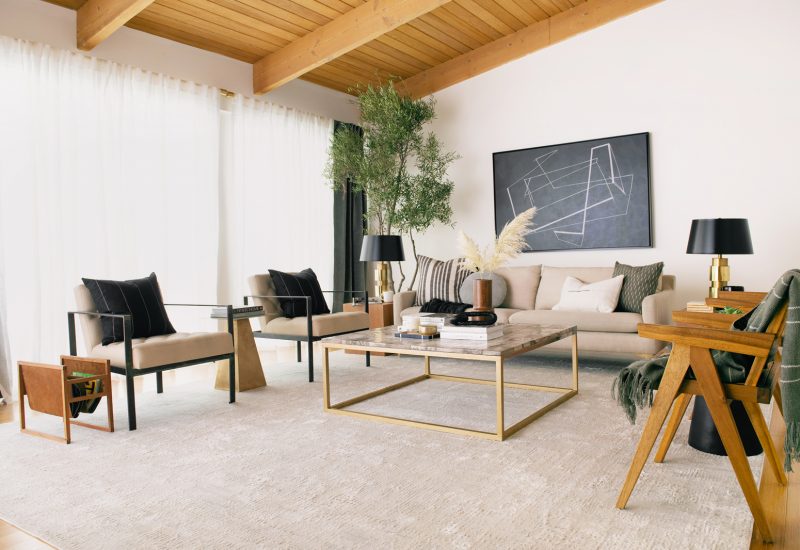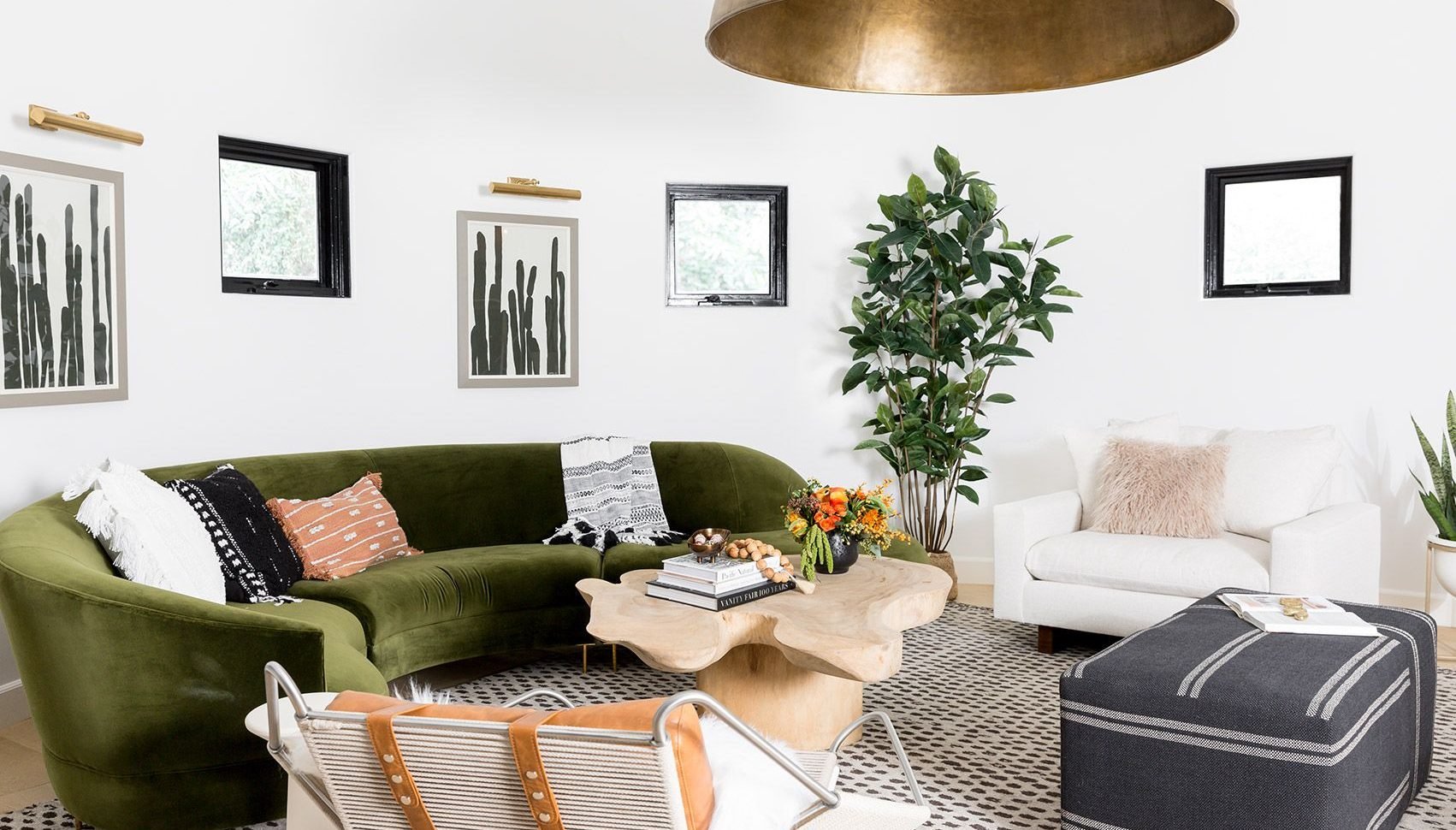Do you ever walk into a room and have a sense something is missing? There’s a fresh coat of paint on the walls, the flooring is in, and lovely furniture all neatly arranged—but something is just off. This is when emphasis comes into play. The principle of emphasis highlights and draws attention to specific areas of the room, creating visual interest. It is a foundation upon which to build the rest of the design.
Emphasis is one of the foremost interior design principles, that without it, can cause a room to appear rather flat and dull—hence the “What is off about this?” feeling. So what does “emphasis” mean? Simply put: creating a focal point in your space, or in layman’s terms, a place that draws in the eye as it moves about the room.
Now for the how. There are countless ways one can establish emphasis, or that focal point. It can be through the use of a dominating element such as a bright color in an otherwise monochromatic palette, a statement piece of furniture or art, or architectural structure such as a picture window. It can also be much more subtle, crafted through strategically placed lighting or an artful curation of décor. When creating a focal point in the room, a good place to start is by thinking not only of what you want to highlight, but what you want to hide as well. Drawing attention to one part of the room and away from another creates a sense of order and visual priority in the space.
Our designers break it down for you so you can create that finished aesthetic that will have all your guests oohing and aahing.
Color
One of the easiest ways to create a focal point is through your color palette. Even if you’re sticking to more neutral shades, anywhere there is contrast has potential to become your focal point—think a muted gray or a soft beige against warm white. If you’re feeling playful or going for a more modern-glam look, go all out with a splash of spiced red or opt for glossy teal cabinets in the kitchen. A tiled kitchen backsplash, collection of assorted throw pillows on the sofa, or the pop of a bright rug or piece of furniture can also serve as a focal point within a room.
There is one designer-favorite way to create emphasis without committing to an entire overhaul. Enter the accent wall. We do love a good accent. Painting one wall a different hue from the rest is a surefire way to create a stand-out space.

Texture & Pattern
Much like the use of color, bringing different textures and patterns into your space energizes the room. A cognac leather sofa with a chunky throw blanket on top becomes an instant focal point through the interesting contrast of buttery-smooth texture and plush knits. An exposed brick wall, playfully patterned wallpaper, or intricately veined marble feature can also anchor the eye.

Lighting
The way light illuminates a room is a powerful way to create emphasis. Our eyes are naturally drawn to areas of contrast like where light meets dark. A gallery spotlight over a piece of art, or the glow of a striking floor lamp, quite literally illuminates design features of the room.
Light fixtures themselves can also become a focal point. An eye-catching chandelier in the entryway, stunning pendant light over the dining table, or even a pair of classic sconces flanking the bed help to draw the eye upward and create a dynamic feel. Bonus: layered lighting can also create the illusion of a larger space. Win-win.
Statement Furniture
Furniture in contrasting colors, textures, or even silhouettes gives your space a pop of pizzaz—something that makes you stop and think, One thing is not like the others.
Perhaps you have a timeless black and white palette, accented by a striking blush velvet sofa, or emerald sideboard. If opting for a more neutral palette, furniture a shade darker or lighter than the rest will do—or go for a contrasting texture such as a rattan chair or a well-loved leather accent chair alongside the alabaster linen sofa. And again, distinct forms can also foster emphasis within a space, blending clean lines with a more sculptural piece.

Architectural Details
Elements already built into the room may in and of themselves serve as the focal point. Fireplace mantles, exposed beams, ornate molding, intricate flooring, picture windows, archways, and elegant French doors are all examples of emphasis at play in your home’s design.

Does nailing emphasis sound a little daunting? Our designers are here for you. Take our style quiz today and let’s get started.

